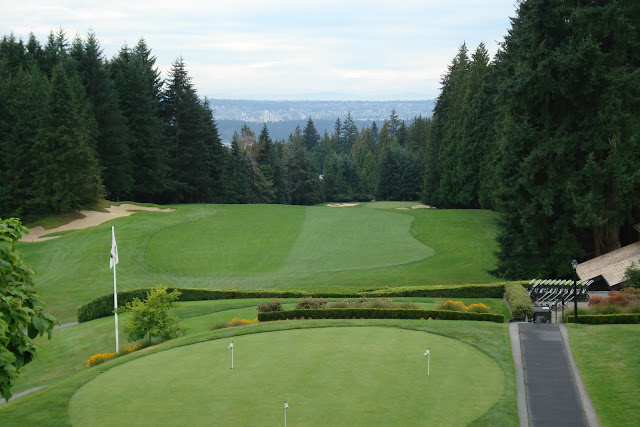In order to provide an efficient operation, it is important for proshop staff to have direct visual contact with the first and tenth tees, allowing them to monitor progress and relay relevant information to members or public players and limit confusion. A smooth start to the day leaves a good impression, and that helps generate repeat play and member retention. An additional benefit to the close proximity between proshop and starting tees is eliminating the need for a starter and their designated hut, which is good for the bottom line.
Another thing to consider when locating starting tees are circulation patterns around the clubhouse and proshop including cart staging and washing areas, practice facilities, parking and entrance road traffic and other country club amenities such as tennis, swimming and outdoor event facilities. The flow of traffic around this busy area needs to be understood to ensure that those playing golf are not distracted, and golfers do not pose a safety risk to those using adjacent club functions.
When the above issues have been properly addressed, golf course architects need to think about the psychology of the opening tee shot. Golf is an extremely difficult game, and the prospect of hitting a shot in front of numerous onlookers can wreck the nerves of many players. Therefore, I am not a champion of placing golfers on a stage, especially on the first or tenth tee. While tee boxes located steps from the practice green or veranda look good on paper, they can instil fear to those who don't make a living playing the sport. There is no more disheartening way to start a round of golf than by hitting an embarrassingly poor drive, as it can lead to a big number right out of the gates and that can ruin confidence, wreck a scorecard and diminish a golfers overall enjoyment of the game. Balancing the desire for visual contact between proshop and starting tees while maintaining a level of isolation for golfers is important, and can be achieved by prudent planting such as hedges to create partial visual separation or the use of mounding to create physical separation. Golf is meant to be enjoyed, and setting golfers at ease to start a round can make a difference in whether a player has fun or finds frustration early and often.

This comment has been removed by a blog administrator.
ReplyDeleteThis comment has been removed by a blog administrator.
ReplyDelete